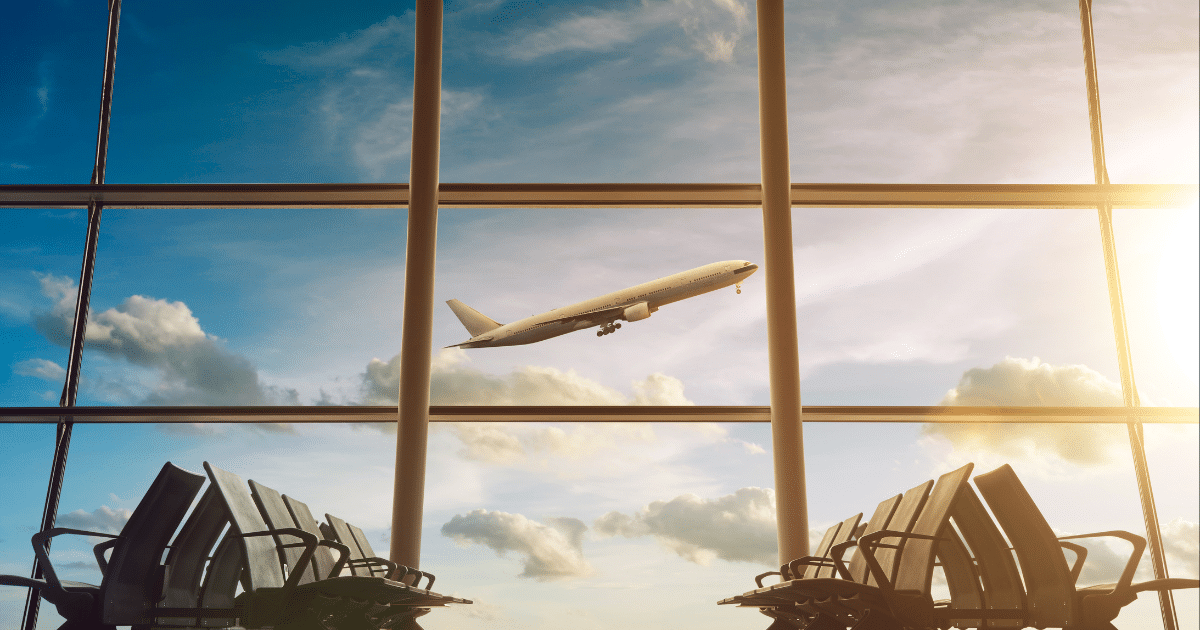This blog post, "Fear of Flying Part One: What this Series is and Why it Matters", is timely, I suppose. I planned on writing this series on flight anxiety right before the tragic Air India crash in June 2025. The months leading up to that were riddled with other rare occurrences such as the Army Black Hawk helicopter collision with an American Airlines flight near D.C. As is often the case, when something like that happens, the news likes to take advantage of the heightened fear and frenzy—finding other aircraft malfunction-related stories to cover from every corner of the earth.
Although these sorts of things do happen every so often, it’s common to see a string of events like this and wonder if something is wrong—to wonder if flight safety has somehow been compromised. If you’re an anxious flier, be aware that even the average everyday person is impacted to a certain degree. They think more about worst-case scenarios than they might otherwise. The intrusive thoughts, the “what ifs,” become more prominent. I say that only to normalize the experience.
Although flying is still very safe statistically, it often feels riskier than it actually is. Hear this staggering statistic: Between February 2009 and January 2024 (a period of 15 years), there were ZERO (yes, zero) fatalities from U.S. commercial airline crashes involving passenger carriers. During that time, there were 140–150 million flights that took off and landed without a single passenger fatality in the United States.
So how will you know if this blog series can help you?
News headlines (and the part of our brain that wants to keep us alive) can often distort reality and the perceived chances of something bad happening. That means that if you are going to follow this series and some of the resources I will be offering over the next several weeks or months, we must operate under the assumption that flying is generally VERY safe. If you’re not convinced of that fact on an intellectual level, then what I have to offer may not be for you.
What the Fear of Flying Is All About
Although I will cover some flight safety statistics and normal sounds and sensations aboard an aircraft, this material really gets to the bottom of something else. It addresses what fear of flying is really about for most people—and that’s the loss of control (having to let go and to trust). It’s about fear of panic. It’s about all of the thinking that we engage in that fuels anxiety. It’s about all of the “what ifs” and the fear about how our body or mind might react in the skies if things start to get a little uncomfortable.
See Part 2 – “What the Fear of Flying Is Really All About” here, where I further elaborate.
What Else You’ll Learn
In this blog series on flying anxiety, you’ll learn about the underlying mechanisms that keep fear alive and what it takes to interrupt the cycle. You’ll learn why logic alone usually can’t calm fear, and how avoidance, control-seeking, “safety behaviors,” and reassurance can unintentionally reinforce anxiety over time. I’ll walk you through practical strategies based on evidence-based therapeutic approaches like Acceptance and Commitment Therapy (ACT) and Exposure and Response Prevention (ERP), not just to get through a flight, but to change your relationship with fear itself. Whether you haven’t flown in years or you fly regularly but find it really hard, this series is designed to help you move toward freedom—not by eliminating fear entirely, but by making space for it without letting it run the show. And even though I’m talking about the fear of flying, the principles in this series will broadly apply to anxiety in other contexts as well.
Ready to do the work?
I developed a comprehensive 47-page workbook on the fear of flying called Willing to Fly, which gives you everything you need to know in one place. It includes psychoeducation on the fear of flying, behavioral approaches to help you teach your system that it’s safe in triggering situations, how to deal with anxious thinking and intrusive thoughts that fuel flying anxiety, and various exercises to build insight and help you move toward freedom—doing the things that matter to you instead of avoiding out of fear.
Where to Go From Here
- Read Part 2 – “What the Fear of Flying Is Really All About”
- Check out the full “Willing to Fly” Workbook
- Download the free 9-page “Takeoff Starter Guide”
- Explore therapy or coaching options with Joel Schmidt, Licensed Therapist and fear of flying specialist
We now accept insurance!
Contact us to learn about the insurance we accept (or our private pay rates) by emailing counseling@floatoncounseling.com, calling 813-515-9602, or visiting our Contact Us page.

